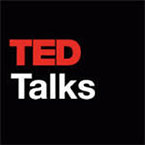The first of a series of columns in which our Chief Scientific Officer focuses on vaccines for the very young.
One of Crucell’s goals is to free all children worldwide from the infectious diseases that may prevent them from growing up healthy and happy. The infections that have the most impact on a person’s chances of reaching full potential are those that occur in the first years of life. That’s why all children should be immunized against diseases like diphtheria, tetanus, pertussis, hepatitis B and pneumonia caused by Haemophilus influenzae (Hib). Licensed vaccines exist against all these diseases, but still there are many unprotected children.
Since 2006, Crucell has been able to provide millions of children around the globe with fully liquid pentavalent vaccine (Quinvaxem®), which contains vaccines against all five of these infections. We do this through Unicef. Together, we will reach millions more children in the years to come. Crucell also provides the world with millions of vaccines against measles and rubella.
In a series of columns, I will take a close look at vaccine protection against each of the childhood diseases, as well as vaccines Crucell is now developing that will protect children against major threats like RSV (a common and potentially very serious lung infection), tuberculosis, malaria and HIV. The series start with whooping cough.
The threat
Whooping cough is caused by the bacterium Bordetella pertussis. The name of the disease is derived from the ‘whoop’ sound made by the inspiration of air after a cough. Adults and adolescents are the reservoir of the bacterium and they infect young children, who suffer most from the infection. An incubation time of 7–10 days leads to a runny nose and mild sneezing, followed one or two weeks later by uncontrollable fits of coughing—so forceful they sometimes lead to vomiting—all lasting for a month or so.
Whooping cough epidemics come and go every 3–5 years. In the USA, 2005 was a peak year and an epidemic occurred again this year in California, with about a thousand cases—mostly among newborns, of whom at least five died. This epidemic prompted health officials to plead for population-wide vaccination—not only of children but also booster shots for adults and adolescents.
Vaccine development
In the 1920s, Thorwald Madsen from Copenhagen, Denmark, developed a vaccine from freshly cultured B. pertussis cultures. Two US scientists, Pearl Kendrick and Grace Eldering, subsequently pioneered the whole-cell pertussis vaccine, which is currently included in our pentavalent Quinvaxem®. Kenrick and Eldering developed their vaccine in the 1930s at the Michigan Department of Health Laboratory at Grand Rapids, Michigan, USA. The early field trials (1934–1935) of the vaccine showed an efficacy rate of 89%, using four injections and a large dose. By the end of the 1930s, Kendrick and Eldering showed that less vaccine given in three doses was as effective and had less side effects.
This so-called whole-cell pertussis (wP) vaccine is still used in vaccines in the developing world and emerging economies, but over the past 30 years Europe, Japan and the USA have moved to an even safer, though possibly somewhat less effective, vaccine: acellular pertussis (aP) vaccine. The Japanese scientist Yuji Sato introduced the first safer acellular pertussis vaccine in Japan in 1981. The best aP vaccine (which is currently not available) was developed by Rino Rappuoli of Biocine Sclavo in Sienna, now part of Novartis. Our current head of Regulatory Affairs, Luciano Nencioni, was a key figure in Rappuoli’s team.
Luciano’s year was 1992, when Rino and Luciano wrote in Vaccine: “Acellular vaccines against whooping cough are in the final stage of clinical testing and are likely to become available for mass vaccination in the near future.” The dream that started in 1990 with the publication of a research paper by Luciano and Rino (in Infection & Immunity: ‘Characterization of genetically inactivated pertussis toxin mutants: candidates for a new vaccine against whooping cough’) became reality in 1993. This was the year Biocine Sclavo achieved licensure of its aP vaccine in Italy.
Unfortunately, Biocine Sclavo’s aP vaccine (and DTaP, which combines aP vaccine with diphtheria and tetanus vaccines) had to be withdrawn from the market in 2001 because of a patent dispute.
Now is the time to revisit the making of such a vaccine. It is clear that the current aP vaccines are not as effective as the wP vaccines and that the immunity to aP does not last. Whooping cough epidemics in the developed world, like the current one in California, can and should be prevented. We just have to revive the passion and spirit of the 1930s, when Pearl Kendrick and Grace Eldering developed wP vaccine.
Not just a statistic
On Pearl Kendrick’s death in 1980, Richard Remington, Dean of the University of Michigan, wrote these memorable words: “A life saved by prevention cannot even be identified. Who are the men and women living today who would be dead from whooping cough had it not been for Pearl Kendrick’s vaccine? We can conclude with reasonable certainty that several hundred thousand of them are now leading productive lives, in this country alone. But who are they? Name one. You can’t do it and neither can I …. The accomplishments of disease prevention are statistical and epidemiological. Where’s the news value, the human interest in that? …. But a public service orientation can provide more than ample compensation.”
And so it is.<<




